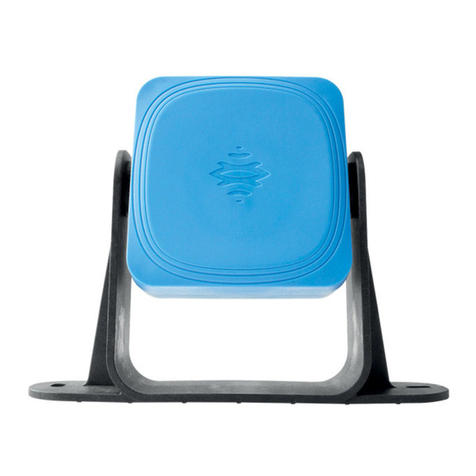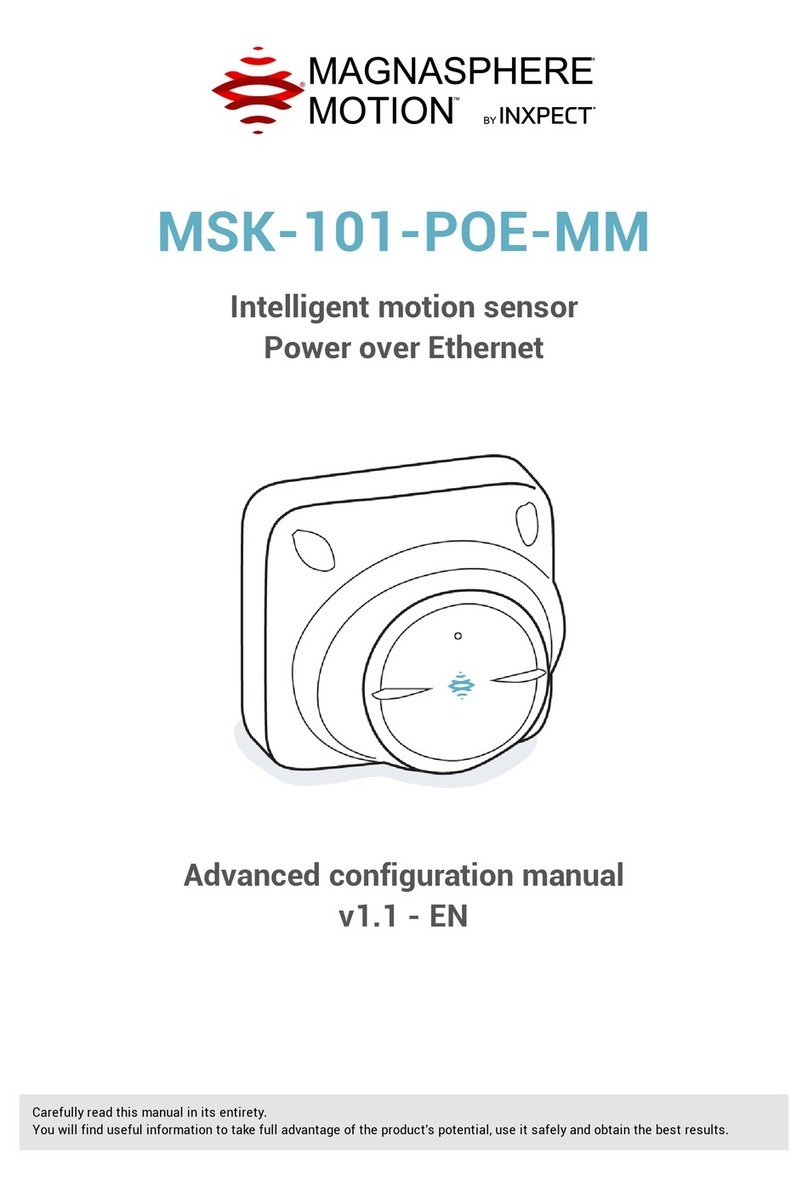
LBK System BUS| Instruction manual v1.0 SEP 2020 |LBK-System-BUS_instructions_en v1.0|© 2020 Inxpect SpA 7
2. SAFETY
2.1 Safety information
2.1.1 SAFETY MESSAGES
Warnings related to safety of the user and equipment as envisaged in this document are as follows:
WARNING! indicates a hazardous situation which, if not avoided, may cause death or serious
injury.
NOTICE: indicates obligations that if not observed may cause harm to the equipment.
2.1.2 Safety symbols on the product
This symbol marked on the product indicates that the manual must be consulted. In particular, pay
attention to the following activities:
lwiring of the connections (see "Terminal blocks and connector pin-outs" on page67 and "Electrical
connections" on page69)
lcable operating temperature (see "Terminal blocks and connector pin-outs" on page67)
lcontroller cover, which was subjected to an impact test at low energy (see "Technical data" on
page65)
2.1.3 PERSONNEL SKILLS
The recipients of this manual and the skills required for each activity presented herein are as follows:
Recipient Assignments Skills
Machinery
manufacturer
lDefines which protective devices
should be installed and installation
specifications
lKnowledge of significant hazards of the
machinery that must be reduced based on
risk assessment.
lKnowledge of the entire machinery safety
system and the system on which it is
installed.
Protection
system installer
lInstalls the system
lConfigures the system
lPrints configuration report
lAdvanced technical knowledge in the
electrical and industrial safety fields
lKnowledge of the dimensions of the
dangerous area of the machinery to be
monitored
lReceives instructions from the machinery
manufacturer
Machinery
maintenance
technician
lPerforms maintenance on the system lAdvanced technical knowledge in the
electrical and industrial safety fields
2.1.4 INTENDED USE
LBK System BUS is certified SIL 2 according to IEC/EN 62061 and PL d in accordance with EN ISO 13849-1.
Performs the following safety functions:
laccess detection function: prevents access to a dangerous area. Access to the area deactivates the
safety outputs to stop the moving parts of the machinery.
lrestart prevention function: prevents unexpected starting or restarting of the machinery. Detection of
motion within the dangerous area maintains the safety outputs deactivated to prevent machinery
starting.
LBK System BUS is suitable for protecting the entire body.
LBK System BUS has been designed to monitor dangerous areas in industrial environments. Thanks to IP67
protection grade, the sensors are suitable for indoor and outdoor installations. The sensor LBK-S01 is also a
type 3 enclosure, according to UL 50E.





























